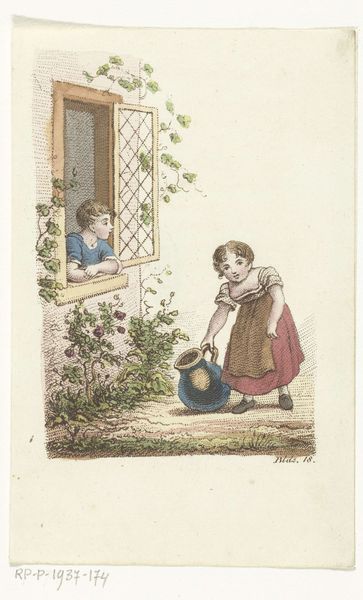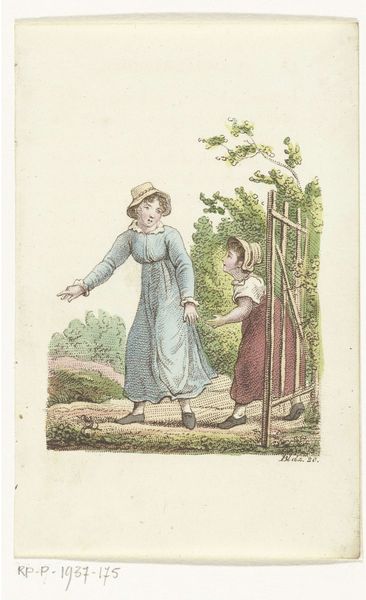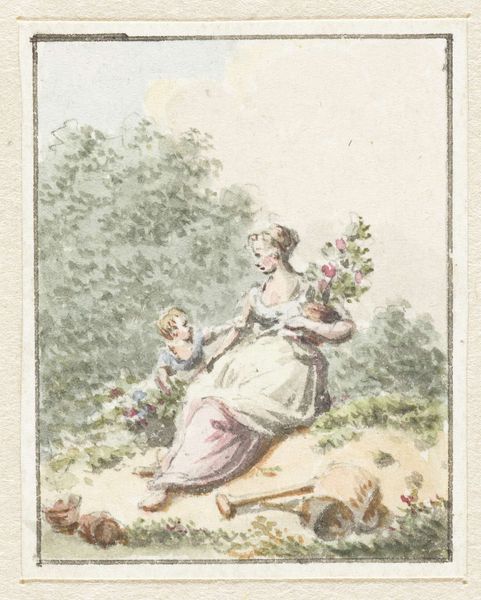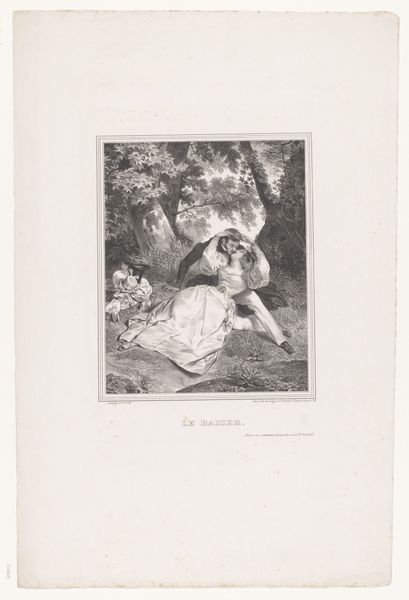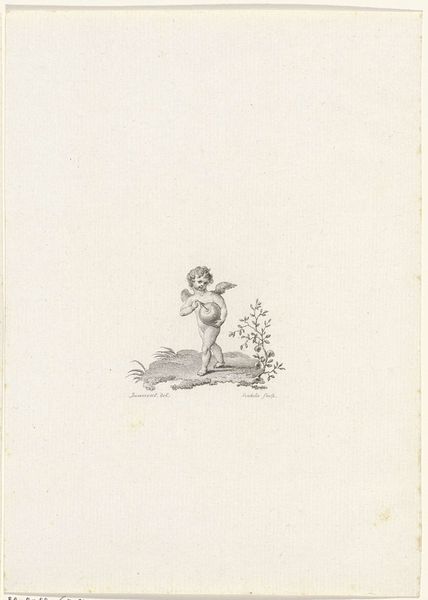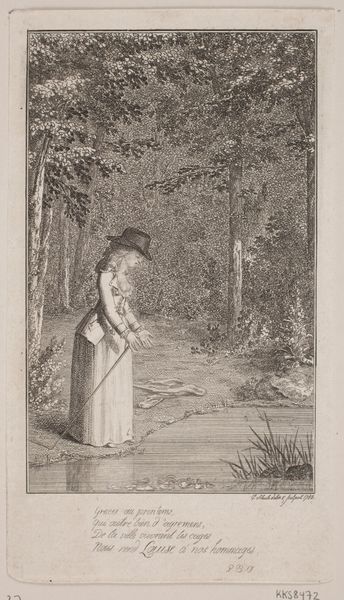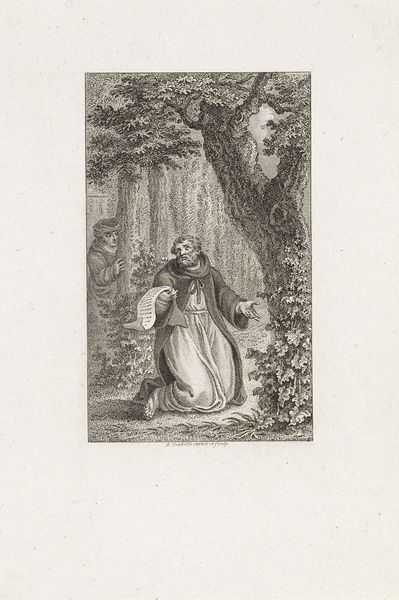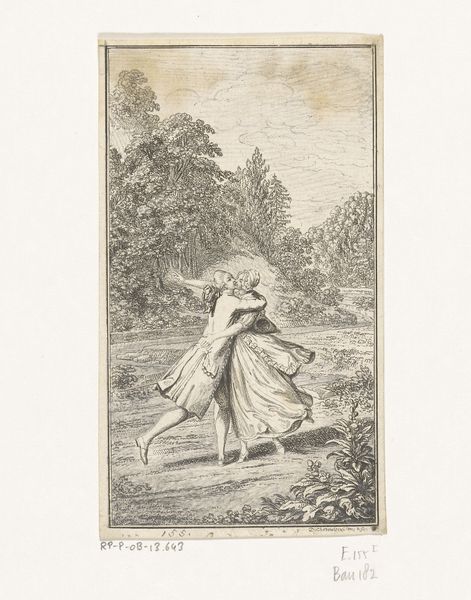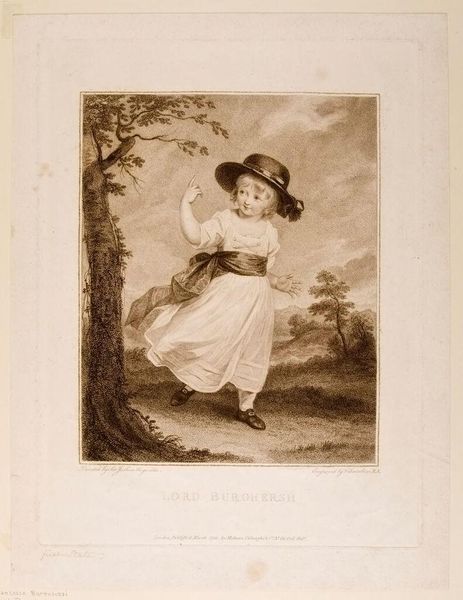
drawing, paper, watercolor
#
portrait
#
drawing
#
fairy-painting
#
landscape
#
figuration
#
paper
#
watercolor
#
romanticism
#
botanical drawing
#
watercolour illustration
#
genre-painting
#
botanical art
Dimensions: height 135 mm, width 86 mm
Copyright: Rijks Museum: Open Domain
Curator: There’s a quiet charm to this watercolor drawing. It’s titled "Maria sprokkelt hout," which translates to "Maria Gathers Wood," dating from between 1807 and 1823, made by Johannes Alexander Rudolf Best. It feels so... innocent, doesn’t it? Editor: At first glance, yes, almost saccharine. But I'm immediately struck by the framing. The low horizon line places Maria, a working-class child perhaps, within this expansive landscape, her figure seeming both diminutive and yet undeniably central. Who determines she should do such a labor? Curator: Her downcast gaze carries a wealth of implications. But let’s focus on the iconography first. Notice the single tree overhead—almost protective in its posture, sheltering her from some unseen threat, an allusion to the Tree of Life, perhaps providing some context of comfort or hope for the lower classes. Editor: And there's a subtle, almost subversive gesture here, by showing the working class and poor picking wood: a reference to economic exploitation, access to resources. Does this artistic representation act as some subtle early protest? Curator: It also showcases Romanticism, finding beauty in everyday life. The botanicals on the border feel true-to-life and capture a harmony between humankind and nature. Editor: Indeed, and while Romanticism idealized nature, it also often conveniently obscured the realities of those forced to work the land. This piece prompts essential dialogues concerning labour exploitation among the very young, as Maria does so. What is the power dynamic displayed by it, by her? Curator: That’s an important question to keep with us. What are our assumptions when seeing this figure collecting sticks in a field, and why were artists compelled to depict those realities at this time? Editor: Absolutely, its legacy echoes within a tapestry woven by countless invisible, child labourers: "Maria Gathers Wood" resonates through histories of gendered labor exploitation that continue into the present. Curator: It reminds us to reconsider the visual cues—innocence, vulnerability—and probe deeper.
Comments
No comments
Be the first to comment and join the conversation on the ultimate creative platform.
